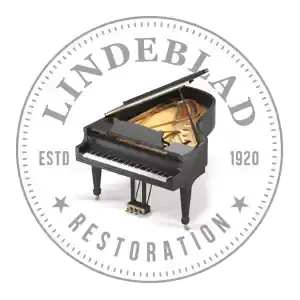As one of the most popular instruments for music-making, the piano has only recently looked and sounded the way it does today. Centuries of anthropological evolution has led to today’s piano design. After extensive research and consultation from some of the industry's most renowned historical sources, we've compiled one of the most comprehensive guides to the pianos' history available online.
Technical advancements have changed as technology and modern manufacturing have entered the scene. Prior to the industrial revolution and dating back as early as 1,000 B.C., early piano remnants paved the way for the instrument we know and love today.
We take a look at this long journey and evolution of the modern piano, starting with a pictorial timeline of the instrument ancestors of the pianoforte. We then provide a detailed history of the introduction of the various piano sizes and types and the fundamental characteristics of all modern pianos.
Chronological Overview of the Piano’s Evolution
2650 B.C. – The Chinese had fashioned an instrument called the “ke” which had strings strung over a movable bridge on a wooden box that could be plucked to produce various tones

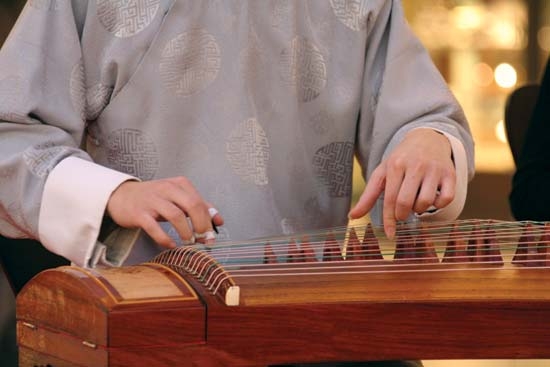
Traditional Chinese Ke Stringed Instrument
582 B.C. – Pythagóras began experimenting with musical sounds and mathematics, inventing the Monochord
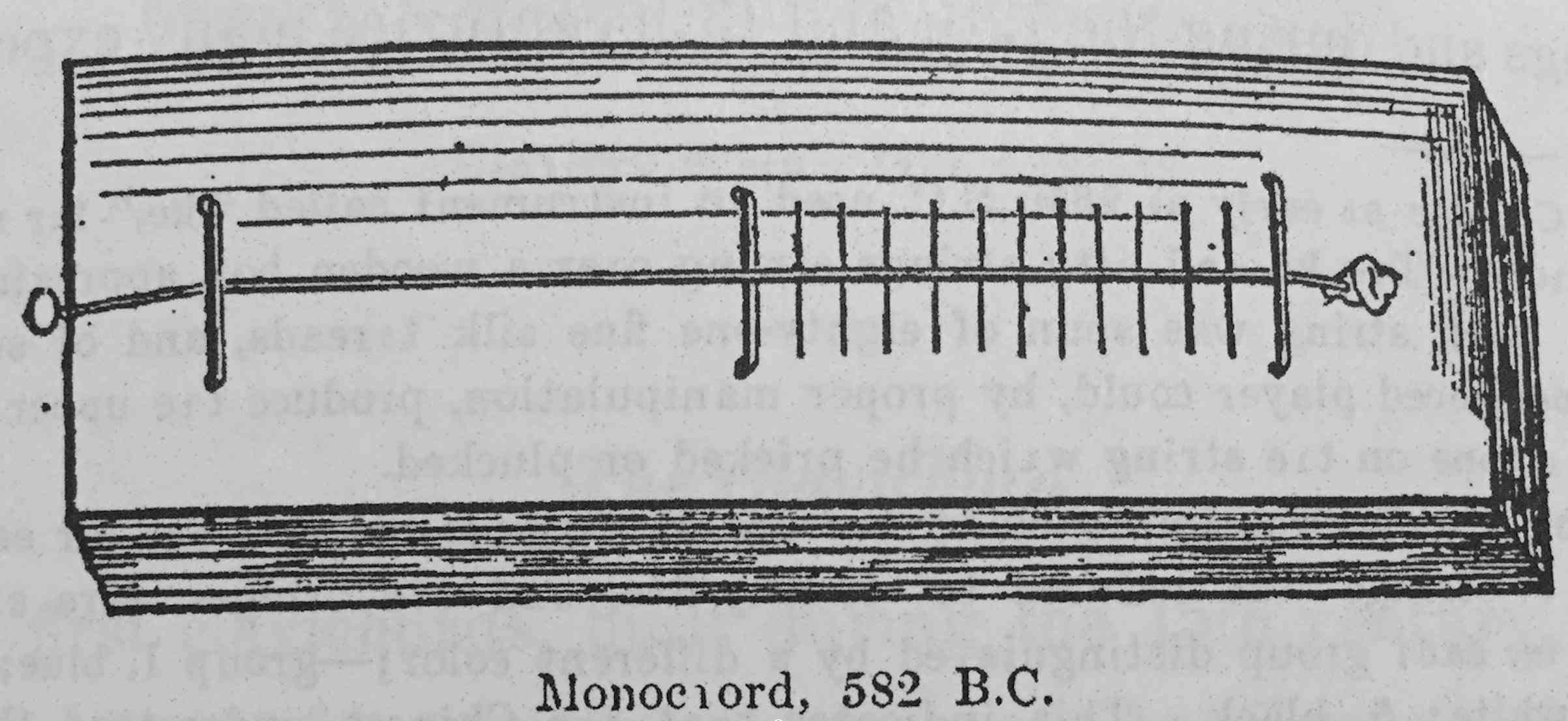
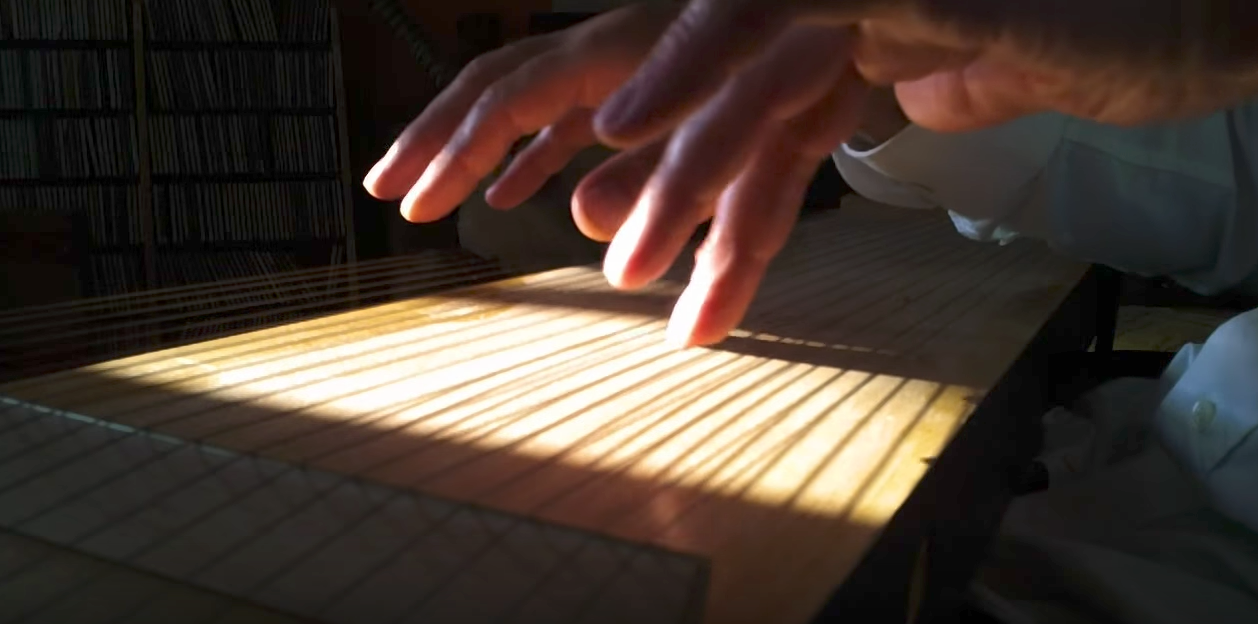
Listen the meditative sound of a monochord in this video!
100 A.D. – A movable bridge was added to the Monochord allowing for more intonation
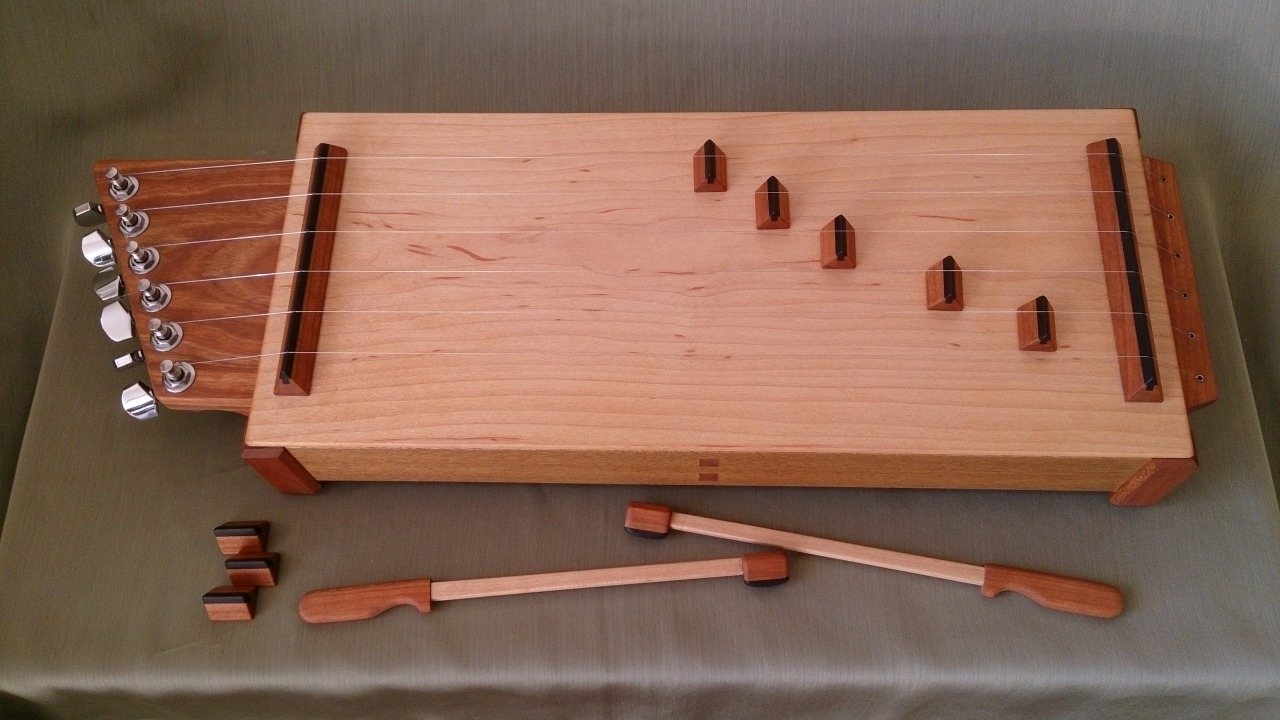
Harmonic Monochord built by Hideki Kitamura from Japan
1000 A.D. – Clavis (keys) were applied to the monochord and contemporary organs and began to prick strings on a scale division to ensure proper tone
14th century – The clavicytherium was invented, an instrument with strings arranged in a harp-like triangle
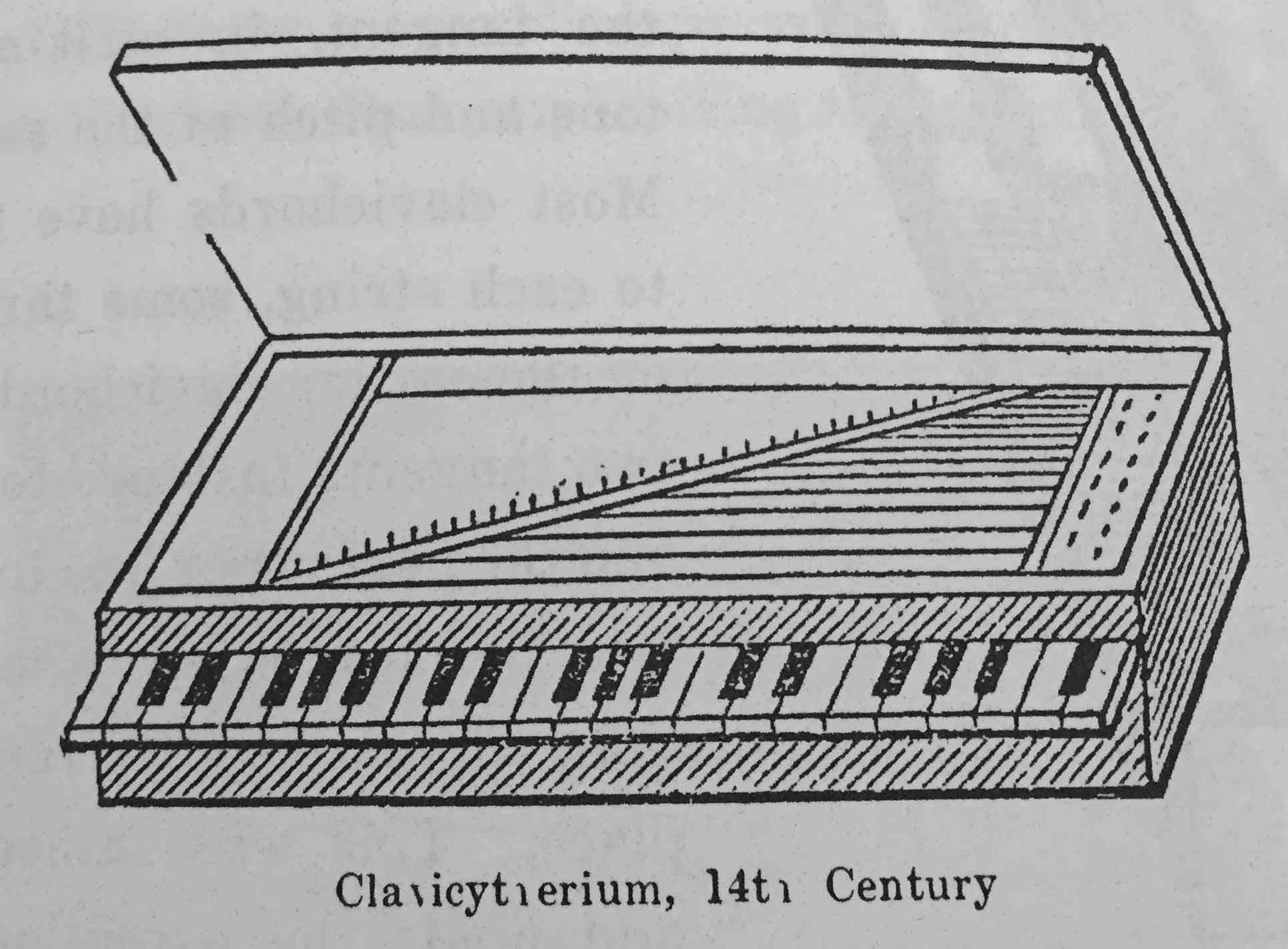
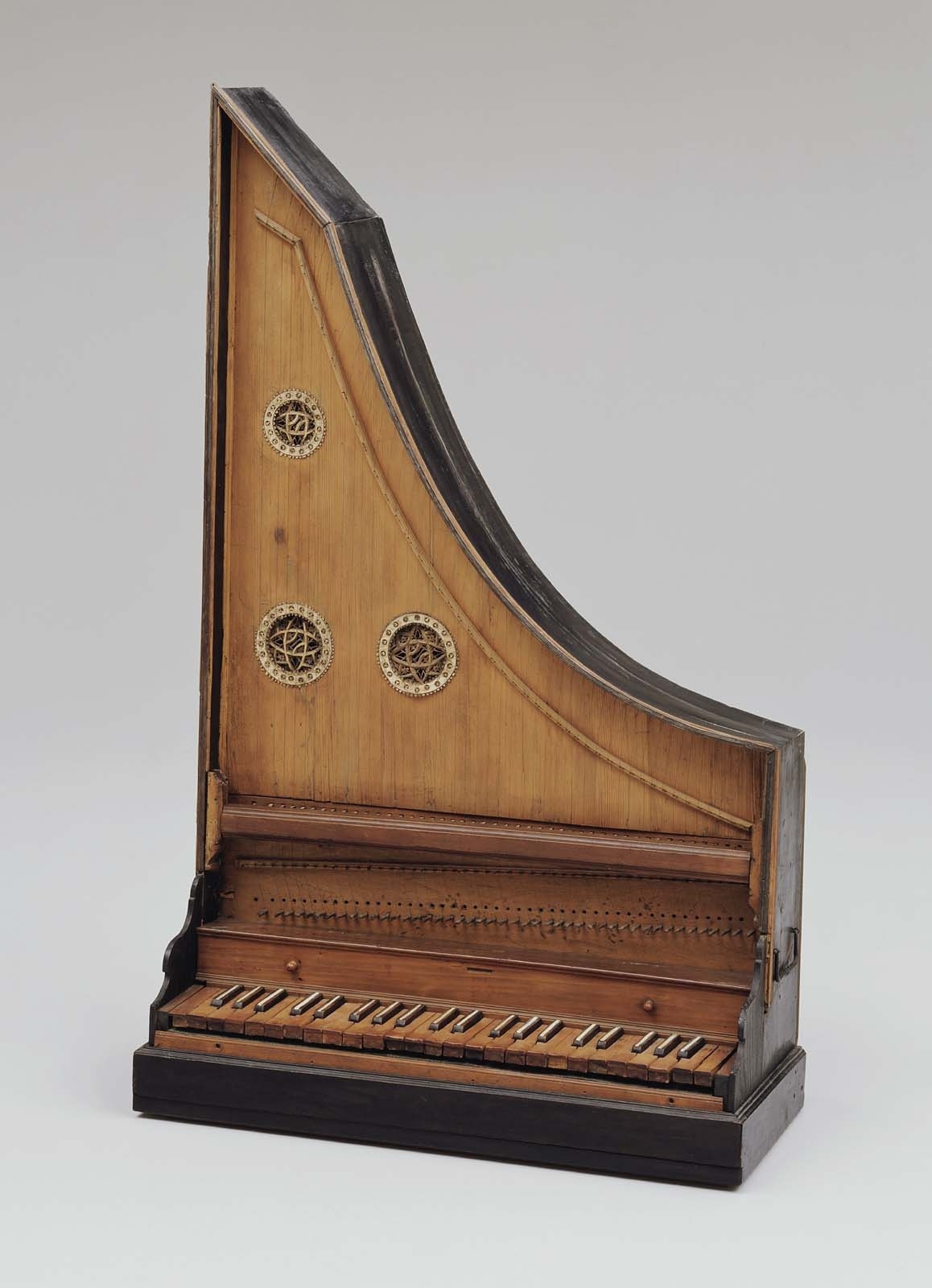
Ornamental Clavicytherium from 1619
15th century – Improvements made to the clavicytherium led to the invention of the clavichord once additional strings were added and pins were fastened to the clavis (keys) allowed for pressure to vibrate the strings
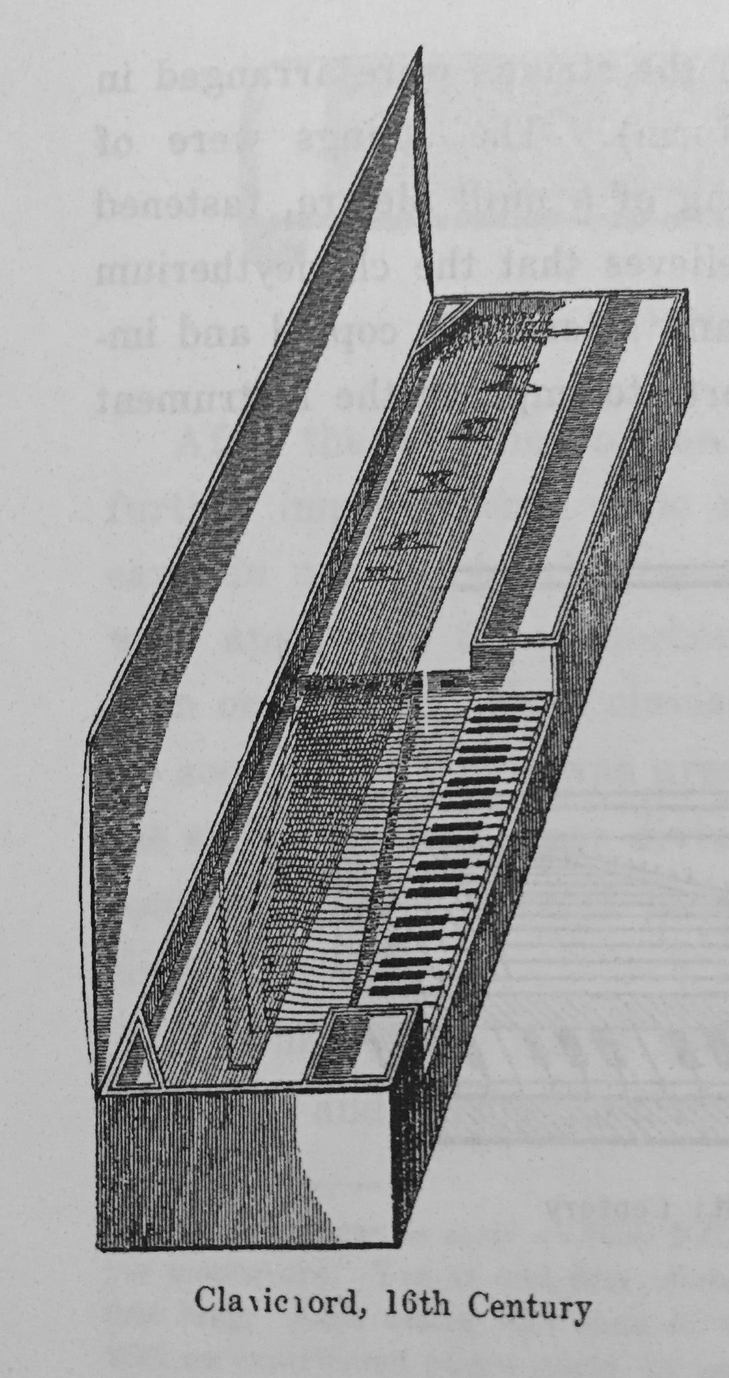

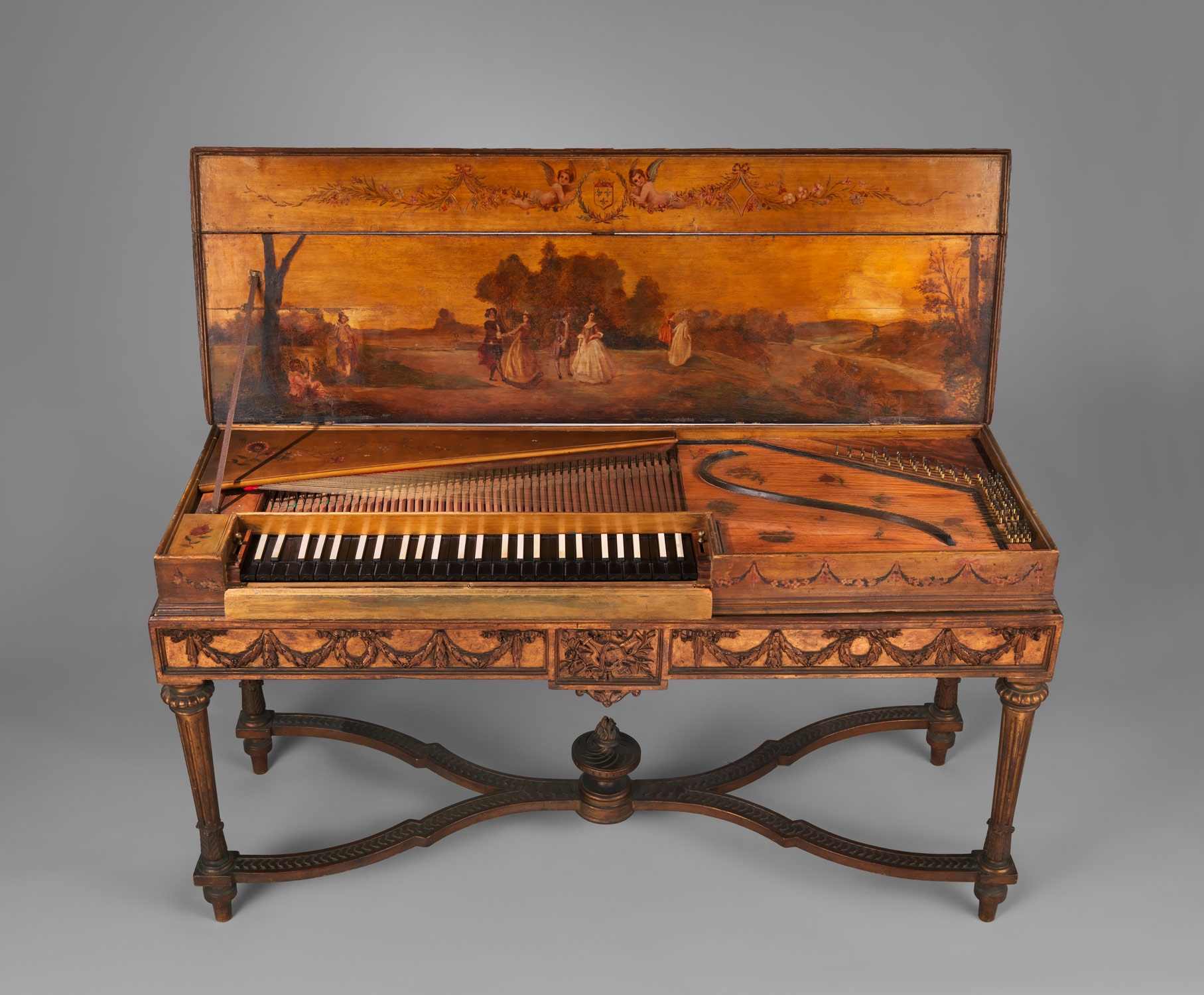
Clavichord with rare hand-painted case design
16th century – Clavichord changes were made to assign individual keys to strings for easier playing and to add a cloth between strings acting as a damper.
1503 – Adaptations of the clavichord led to the introduction of the spinet by Giovanni Spinnetti. It was a longer-stringed clavichord with tangents that pricked the strings using a quill fastened to a jack. Unlike the clavichord, the spinet had no expression or way to manipulate the pressure or strength of the tone.
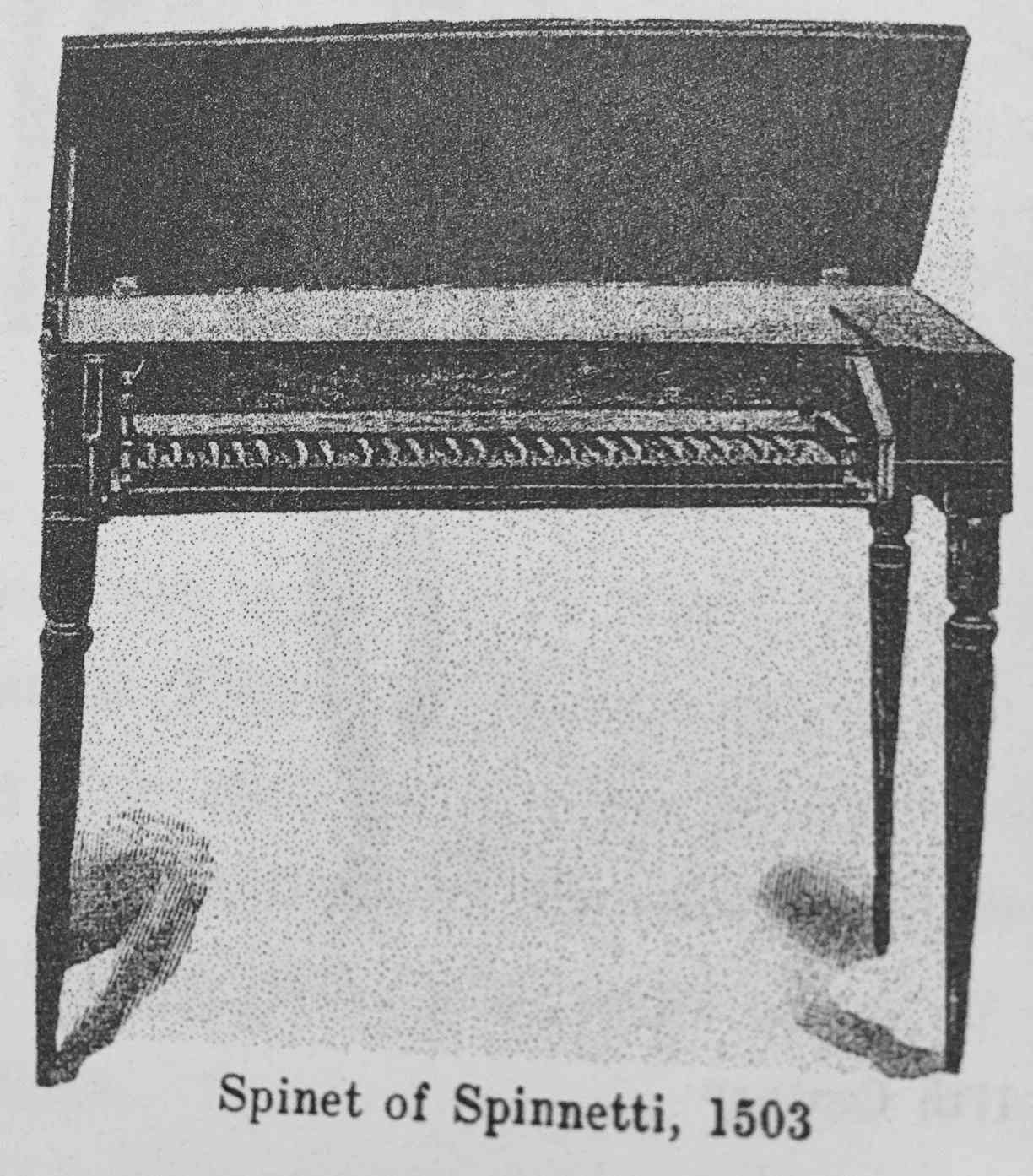
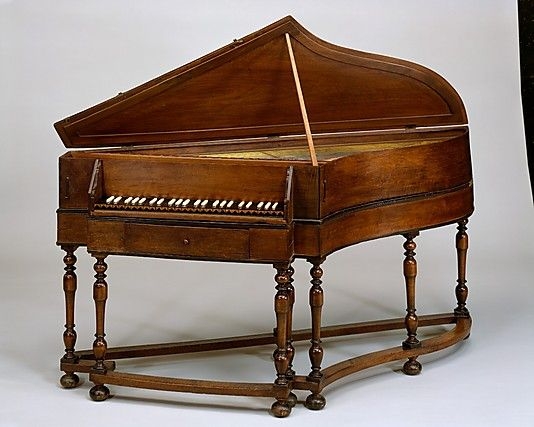
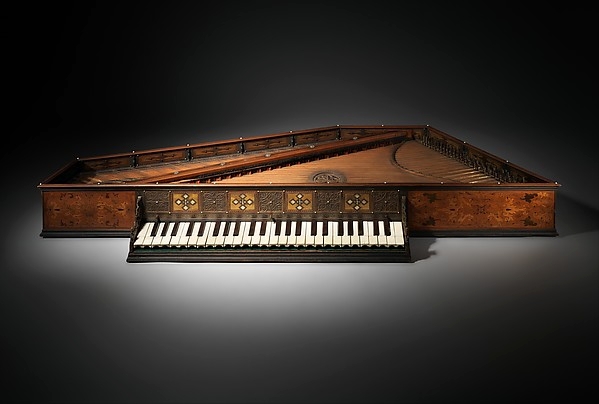
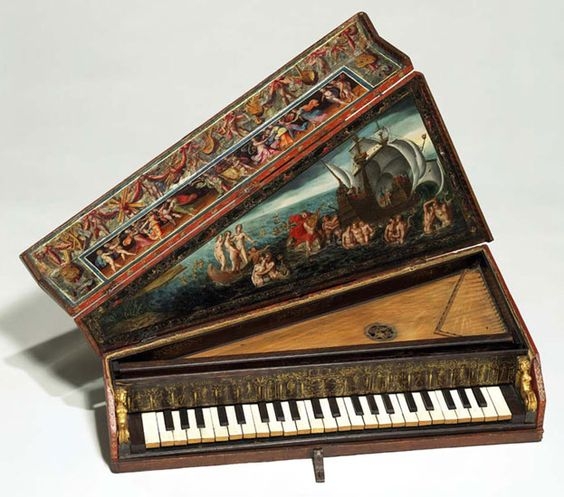
1521 – The harpsichord was introduced as an offshoot of the spinet.
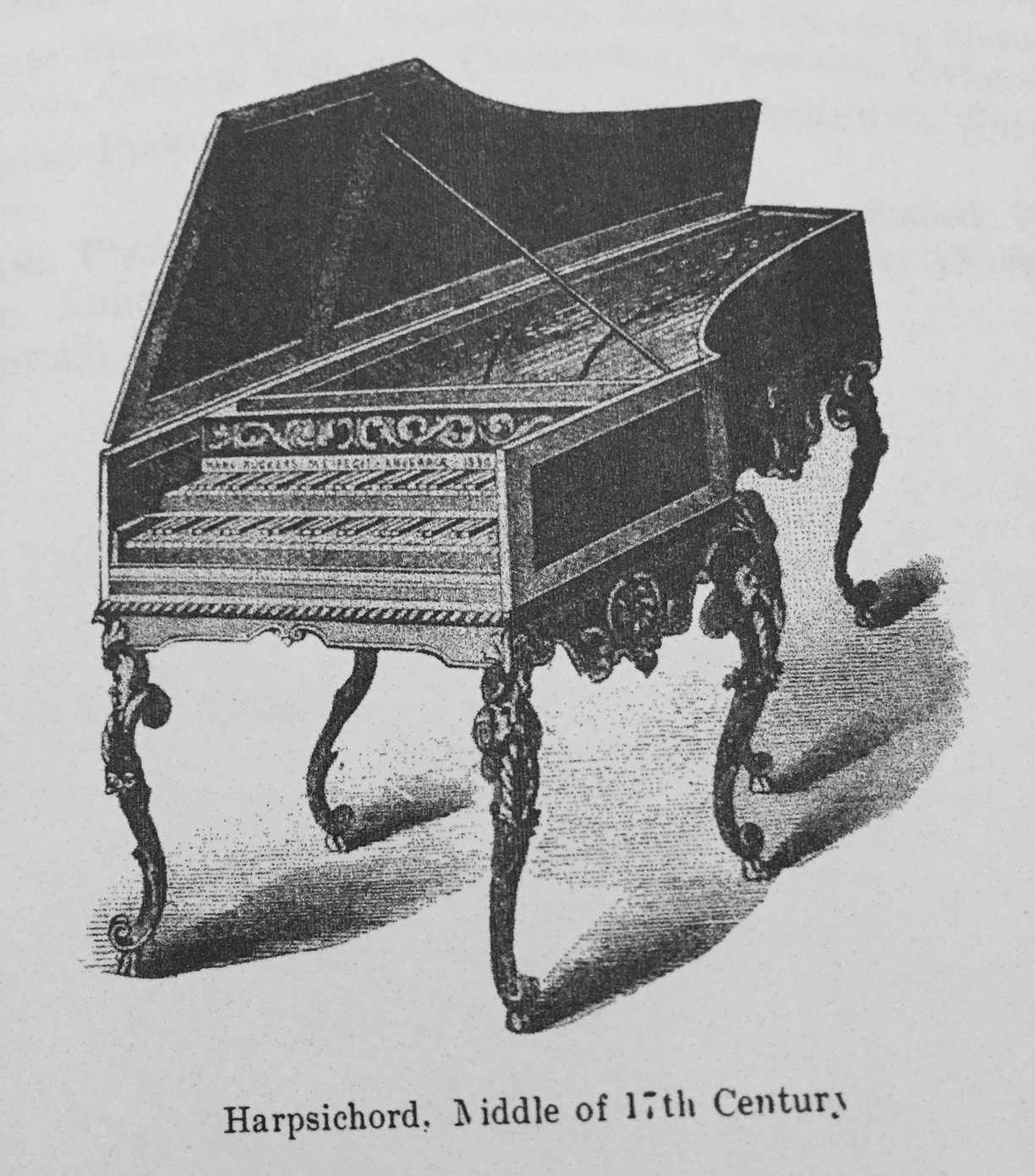
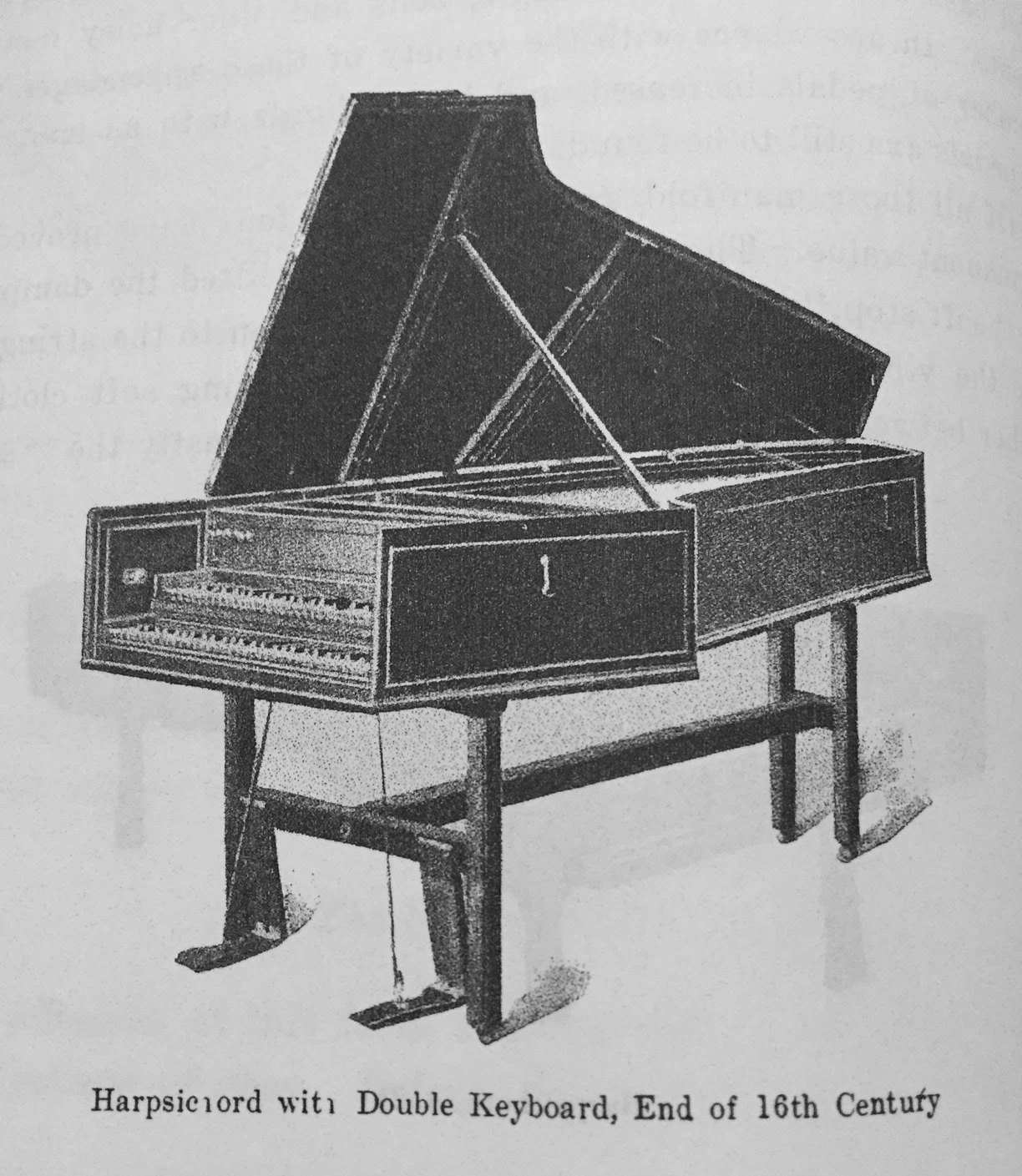
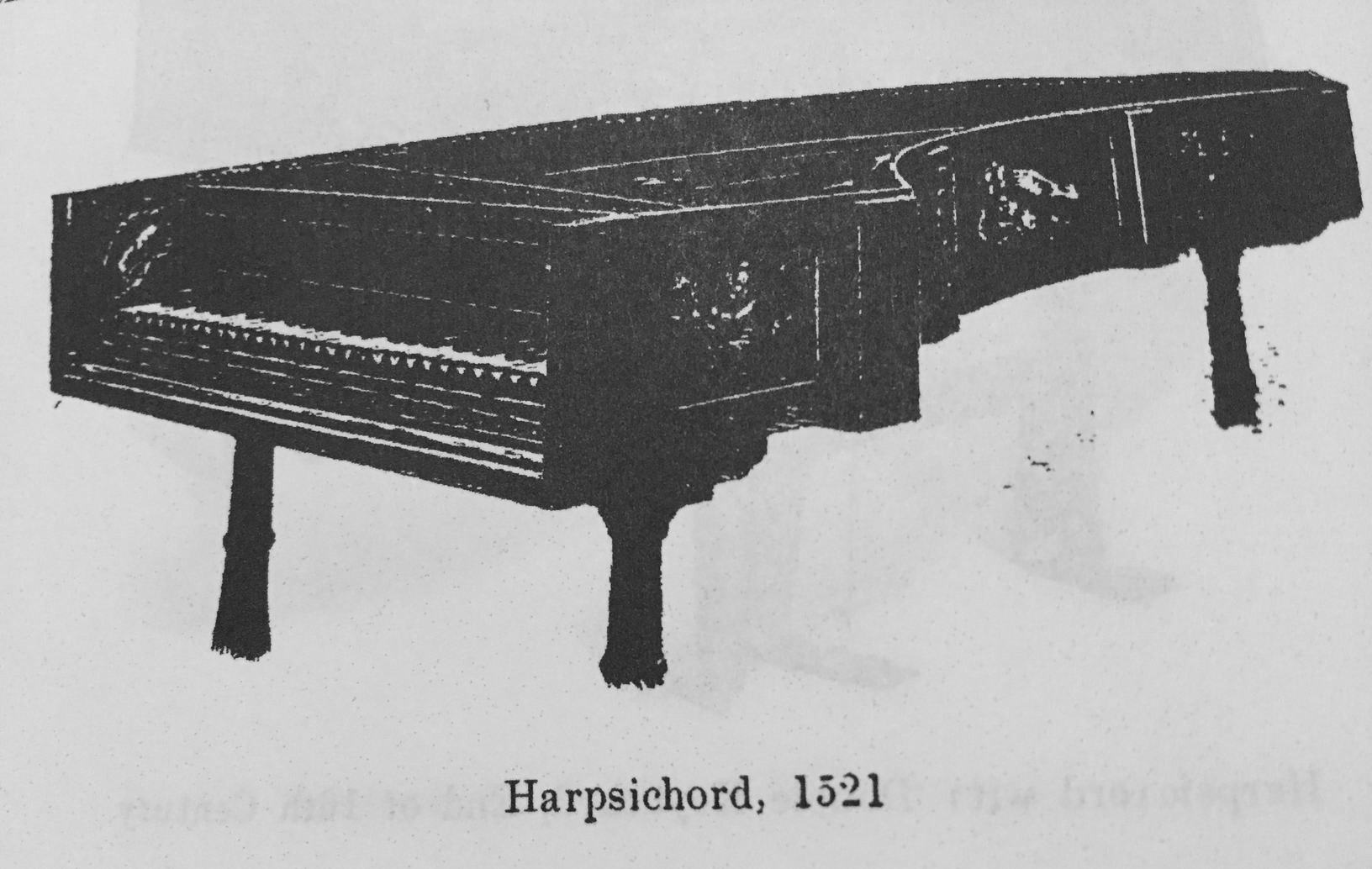
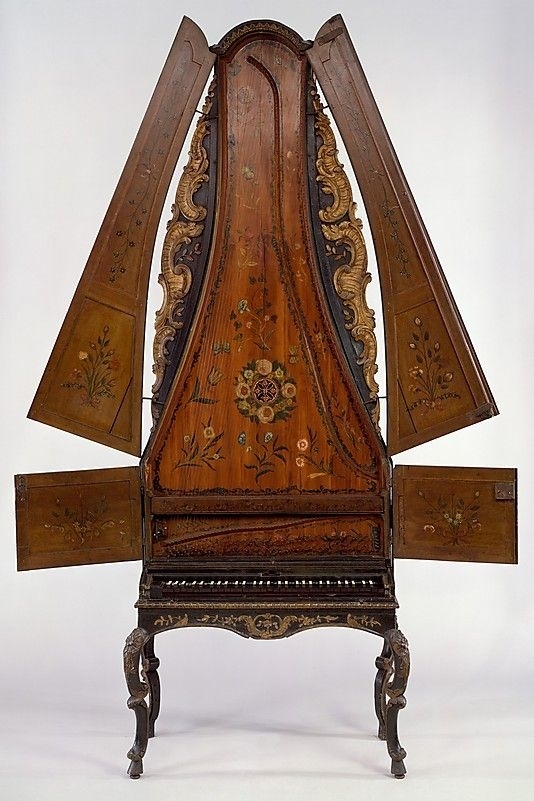
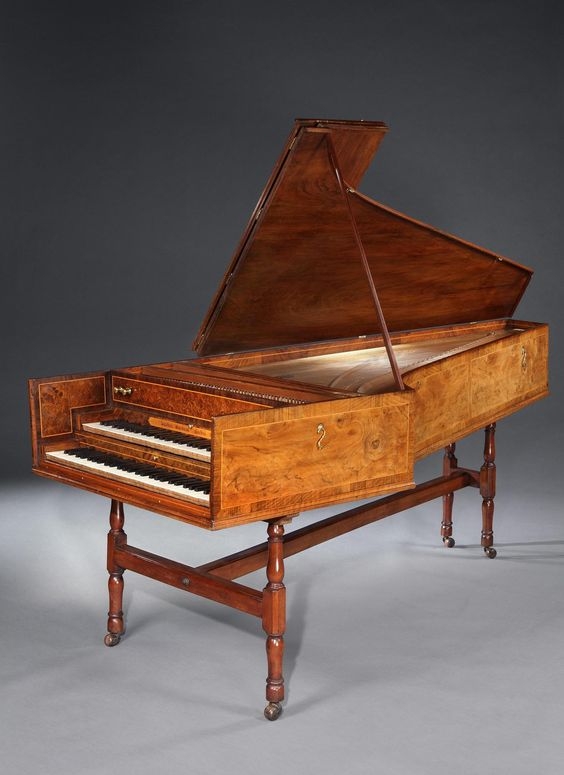
1710s – Hammer actions added to the harpsichord were designed to create the pianoforte
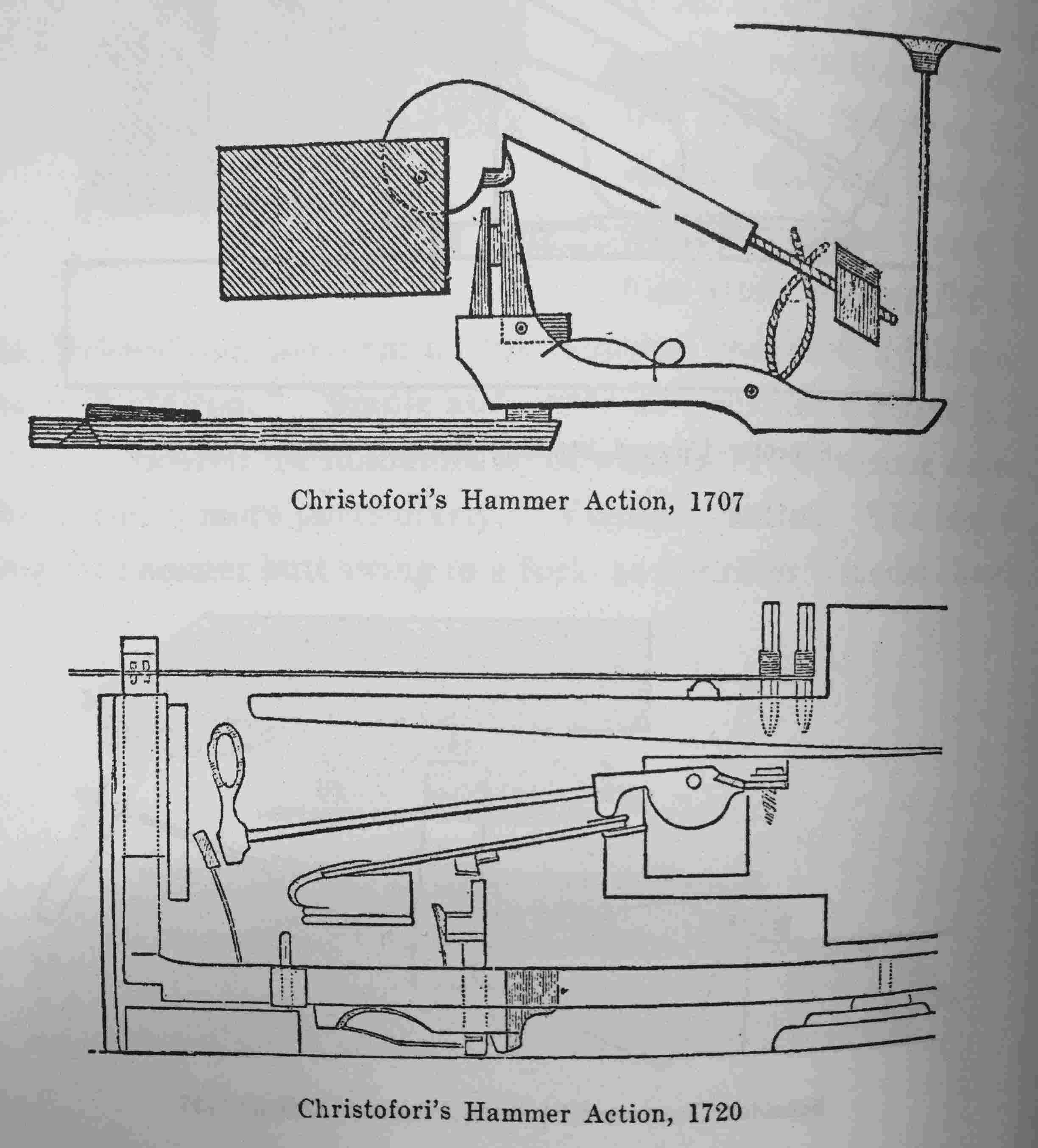
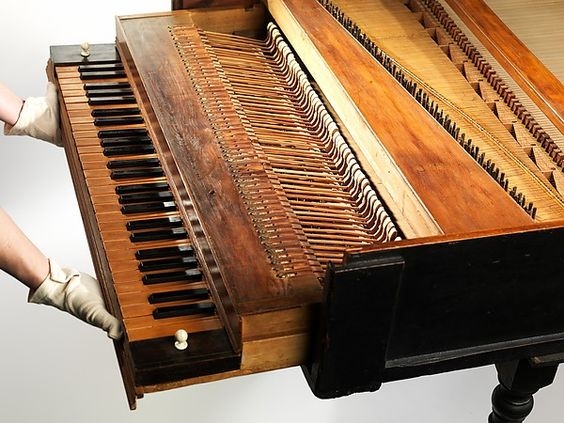
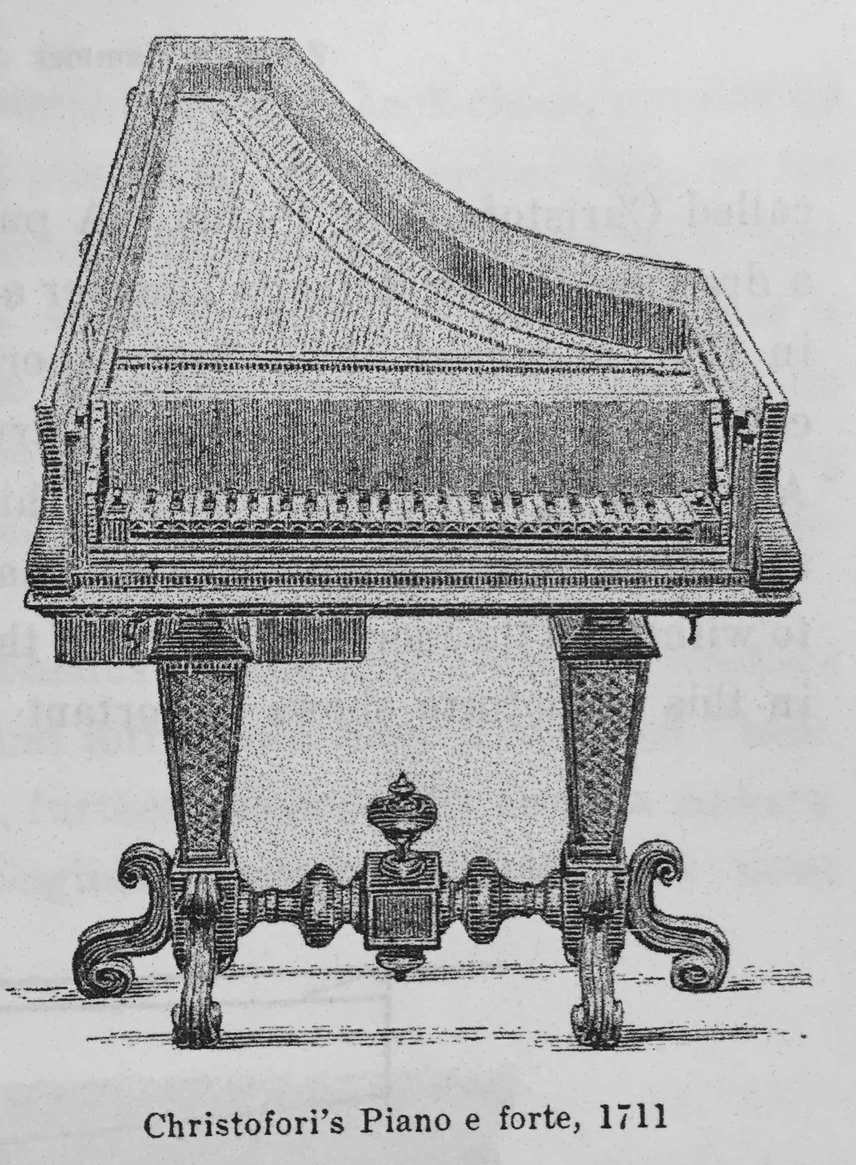
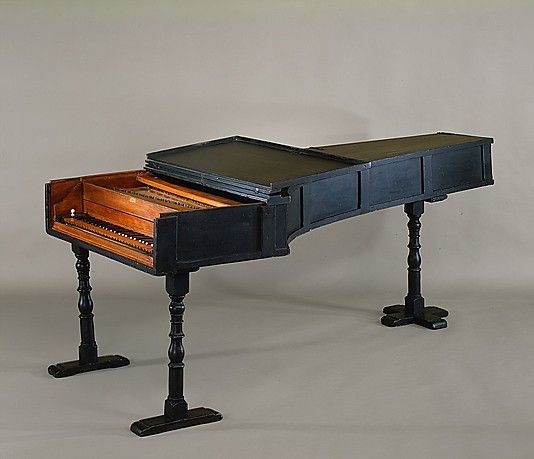
One of the oldest still-existing Cristofori pianos
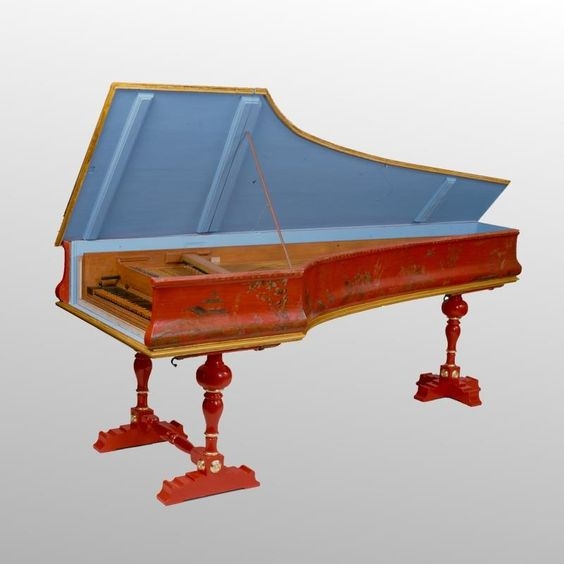
1760 – The square piano was introduced by Johannes Zumpe in London, England
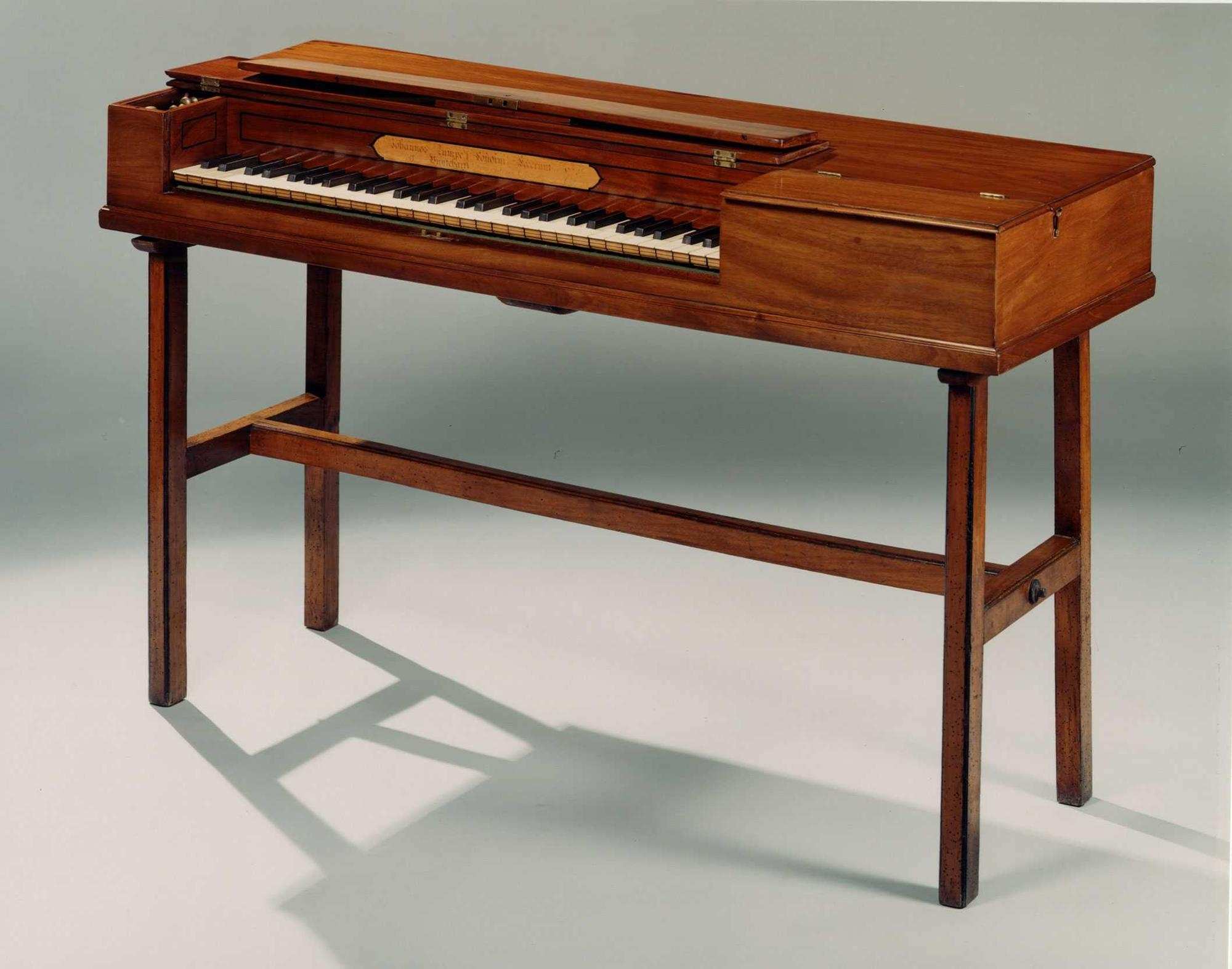
1777 – Stodard introduced the first “Grand Pianoforte”
1780 – The Stein and Stein-Streicher piano hammer changes improved the tone of grand pianos and were preferred by many contemporary composers
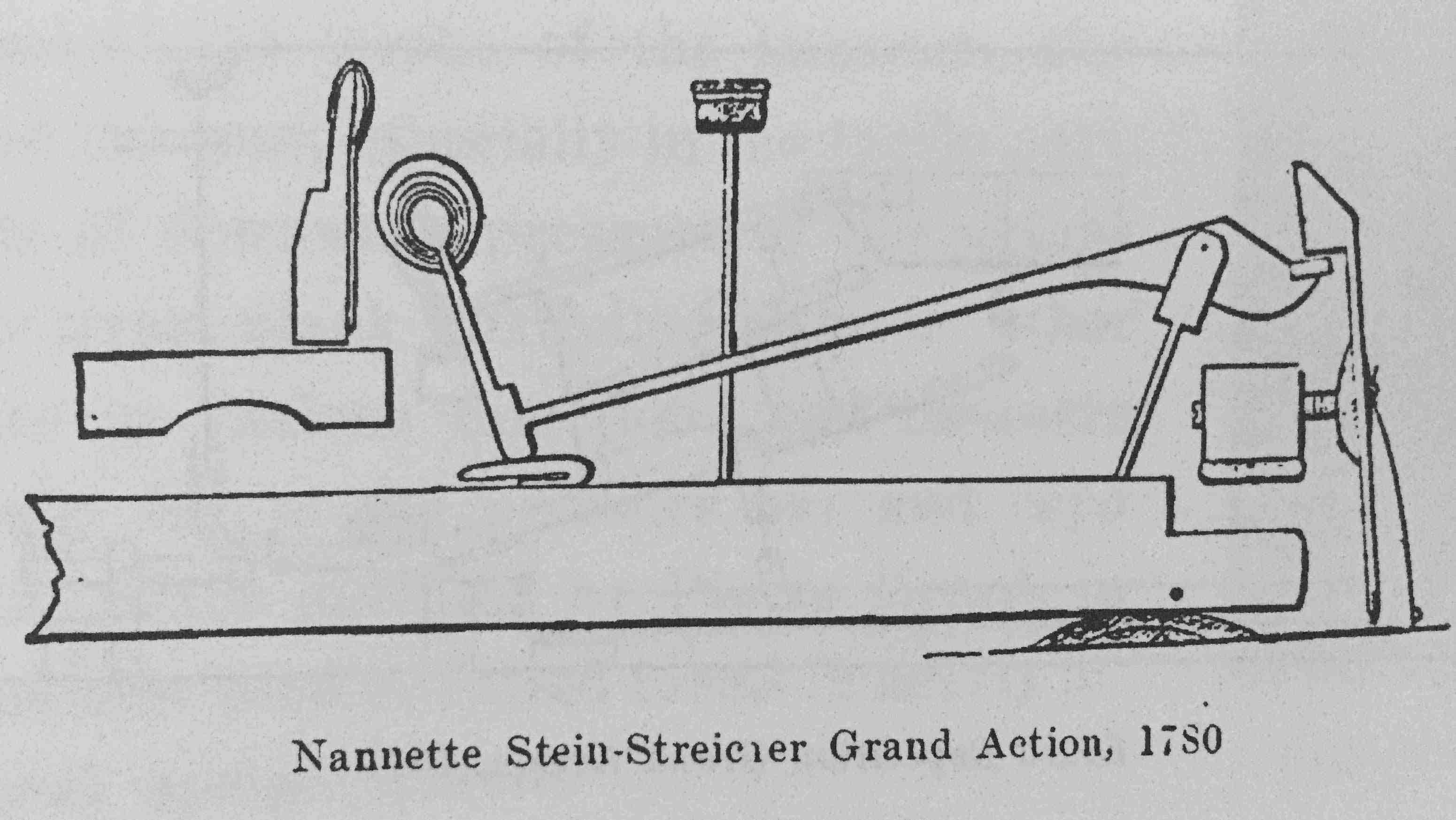
1781 – The position of the hammer action changed to improve the sound of the square pianos which were popular for the next 100 years with minimal changes
1811 – Several European manufacturers introduced upright pianos. Wornum’s upright became popular for its improved sound quality from others.
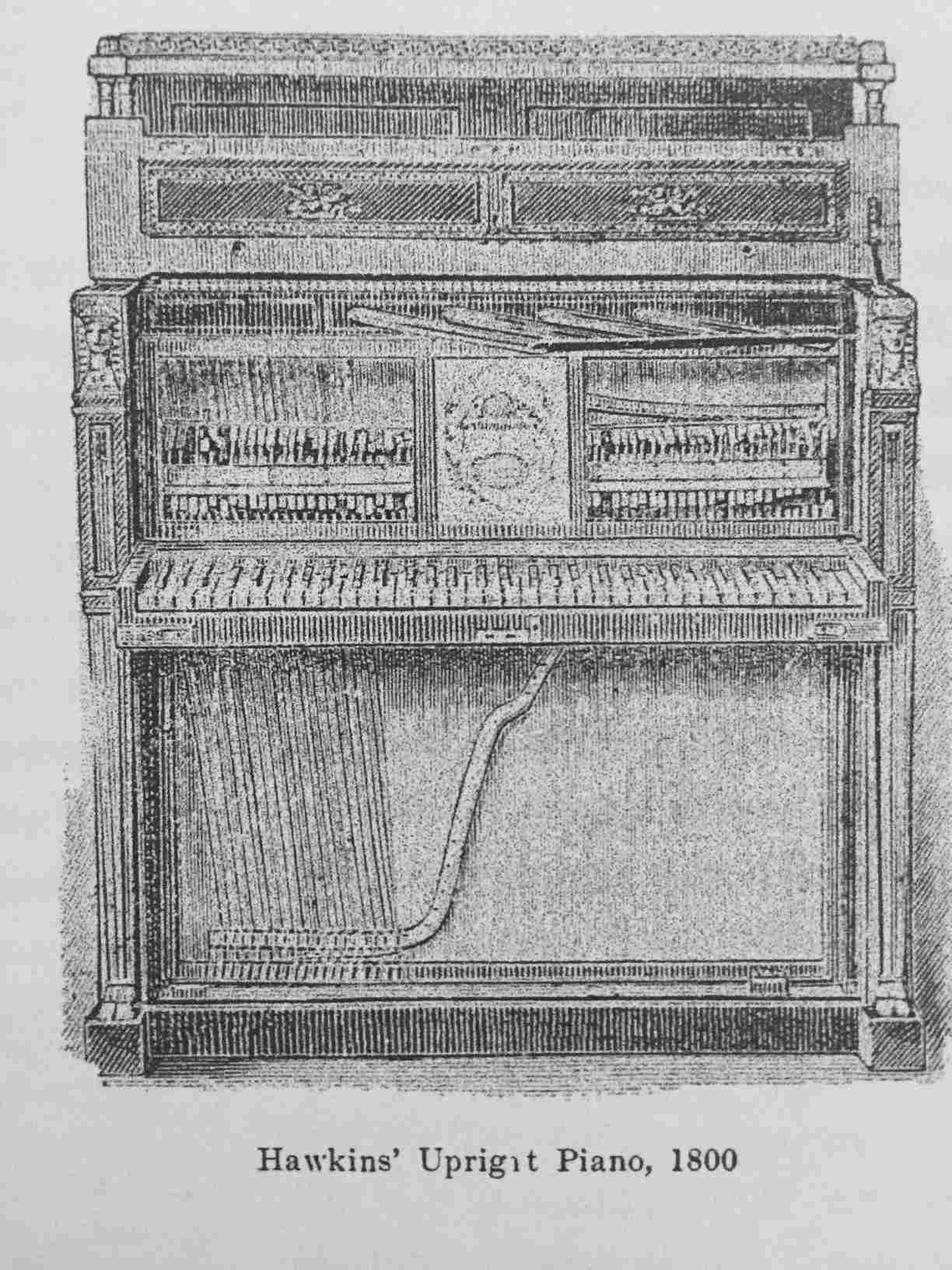
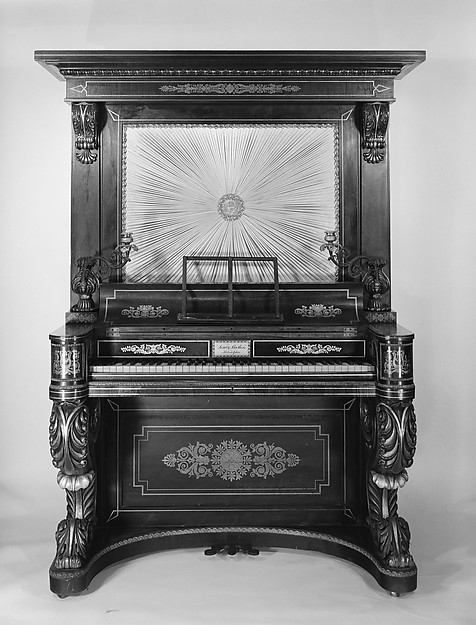
1831 Loud & Brothers Upright Piano
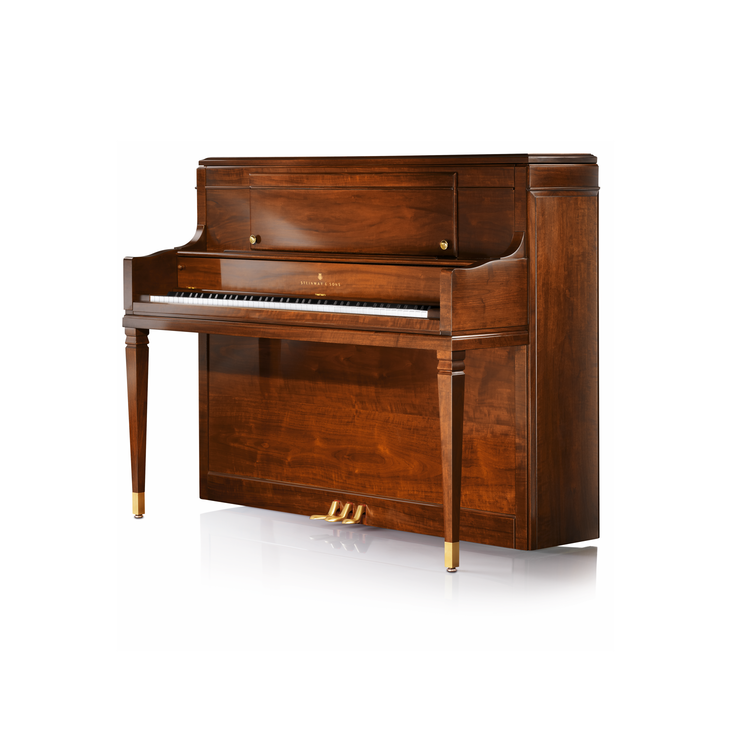
Modern-day Steinway & Sons upright piano
1838 – Sebastian Erard’s contributions to grand piano engineering revolutionized the construction of the grand style of piano.
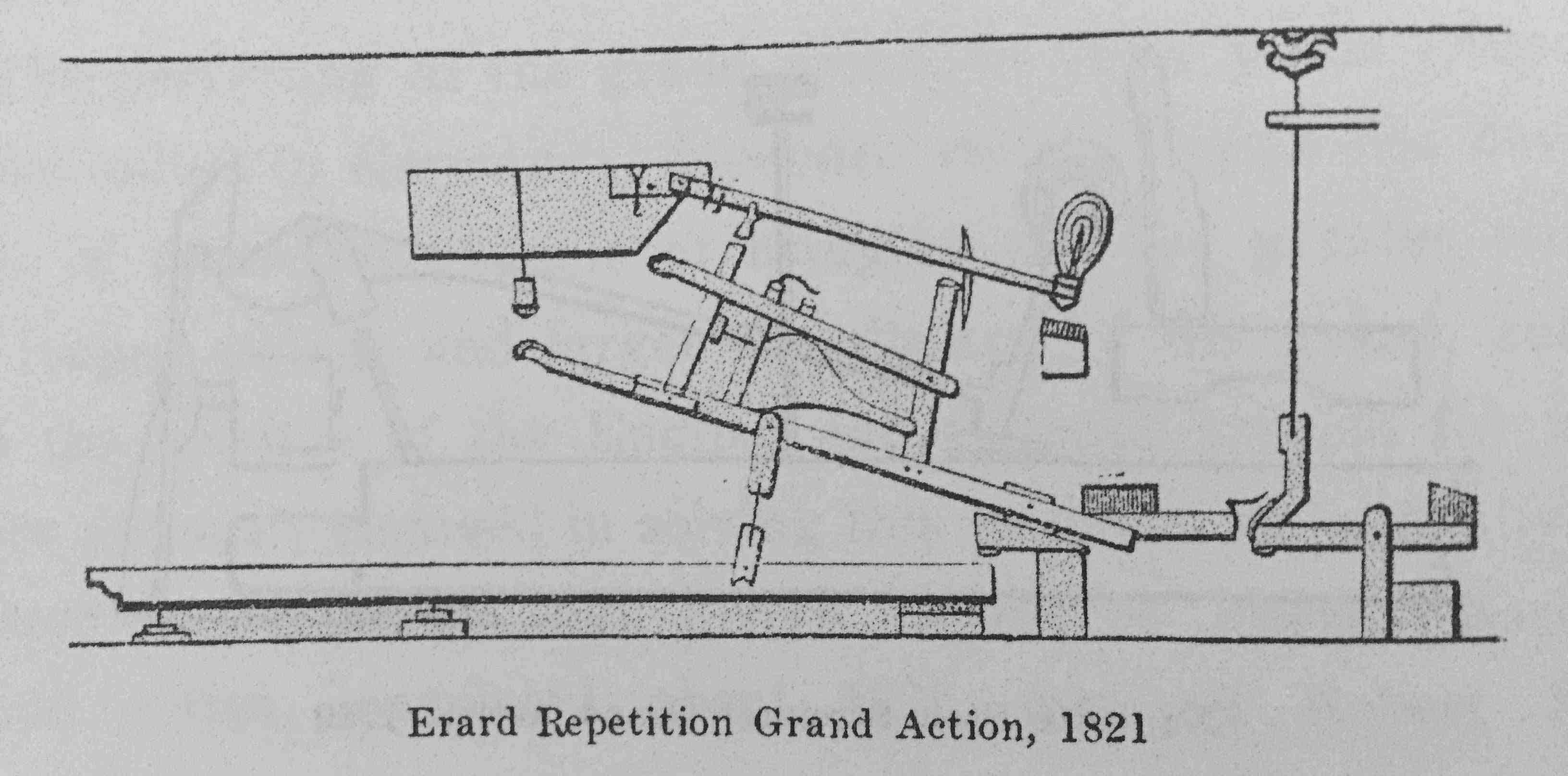
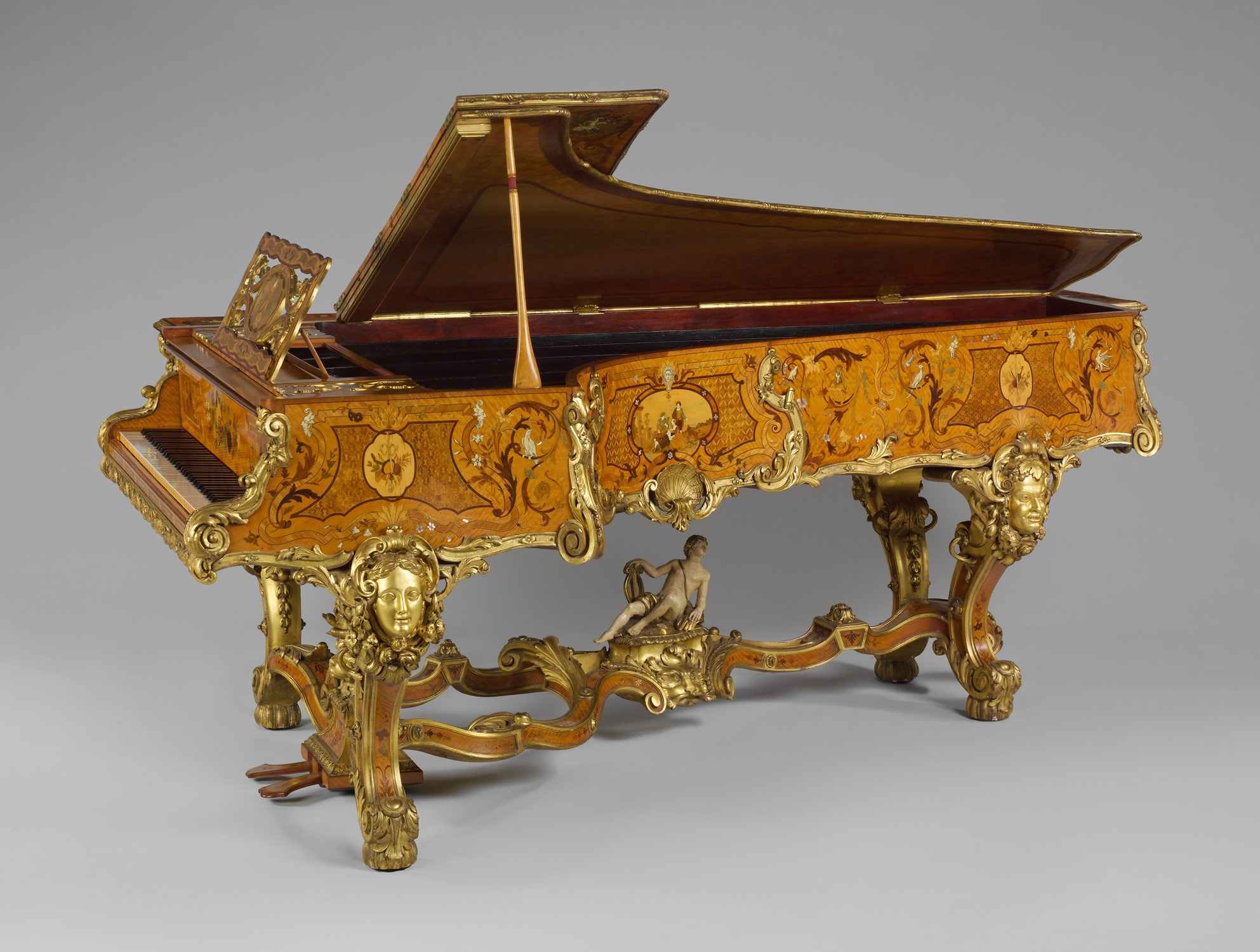
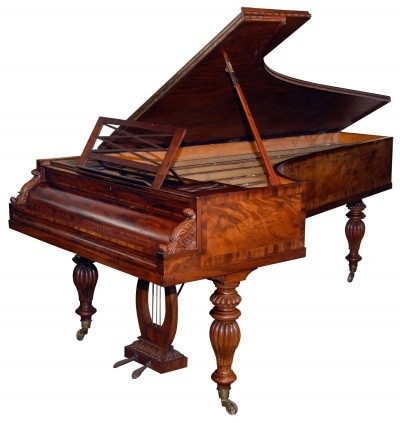
1855 – Steinway & Sons introduced the first square piano with a new scale that revolutionized the sound quality and was adopted by all future manufacturers.
1880 – The square piano was officially “extinct” in both Europe and America. Uprights were the go-to space-saving pianos for the industrialization of urban cities.
Piano Predecessors: Clavichord, Spinet and Harpsichord
Clavichords remained a popular instrument among musicians and composers even as new instrument adaptations were being introduced.
The lack of dynamic made it a wirier sound with less depth. Lap versions of the instrument were played on tabletops while others were built on stands varying from 3 ½ to 5 feet in width. The spinet originated in Italy, named after inventor Giovanni Spinnetti from Venice, but as the instrument gained regional popularity, musicians in England began calling it the “virginal.” Many English inventors began adapting the spinet, now calling them virginals. Early virginals led to the invention of the harpsichord.
The limitations of the spinet caused many to attempt new versions with greater volume or depth of tone as well as an improvement case shape. The harp shape remained popular, and many European instrument makers introduced new versions of the spinet or virginal in a new case shape similar to a harp. This triangular or harp-like appearance is the shape of grand pianos today.
The invention and evolution of the harpsichord began as an experiment to improve the sound quality of the spinet. The longer strings produced the desired volume, but the string plucking on the larger scale increased the intensity of the wiry and harsh tone. Many listeners and reviewers of the instrument deemed it not desirable unless softened by an accompanying instrument or orchestra.
While many attempts were made to improve the sound of the harpsichord, like with the lengthening of the case and the introduction of leather buffs and stops to soften the tone, the pianoforte entered the scene in the early 1700s and soon became the preference of musicians and listeners. The pianoforte and spinet allowed musicians the ability to play dynamically with artisanship unlike the harpsichord and its predecessors.
Introduction of the Pianoforte
Born out of the need to improve the sound quality of the harpsichord, the pianoforte was the combination of many ideas that had been tried on the clavichord and harpsichord. Several inventors began adding hammer actions to restore the smooth tone of the clavichord on the frame and case design of the harpsichord. Schröter, Christofori and Marius were all contemporaries that designed hammer actions within two decades of one another in 1707, 1716 and 1717.
Ultimately, in 1711 the first “piano e forte” instrument was built by Christofori, using his design for a hammer action and revised case design. By 1720, the Christofori pianoforte was admired as the best version of the new instrument on the market. Many other contemporaries were attempting to improve and iterate on the design, and by 1760, Johannes Zumpe had produced the first square piano.
Square, Grand and Upright Pianos
The Evolution of the Square Piano
The square piano can be summarized as a clavichord with metal strings, a hammer action and a reinforced frame. As Zumpe brought the first square piano to London, other manufacturers began to create versions of his instrument which became the standard for “English” models. By 1775, England, Germany, France and America all had versions of the square piano.
A critical advancement allowed the tone and sound to resonate louder (previously a downfall of the square shape as opposed to the grand, wing form pianofortes). In 1781, John Broadwood from London moved the position of the hammer rise to the end of the keys instead of the center where the Stein and Schröter actions had always been positioned. Soon, all pianoforte makers were adopting this change.
Additional changes to the square piano were mostly regarding the material from which frames were being made to achieve a better tone. The English makers were attempting iron and iron hybrid frames to allow for heavier strings and louder, more sonorous tone emanation. Whereas, German makers were devoted to the traditional, wooden frames, claiming the sound was too metallic and wiry when the strings were connected to the iron plate or frame.
By 1855, the square piano had long been the most popular piano style, and Steinway & Sons capitalized on the design, introducing a famous square piano with a full iron frame that had exceptional sound quality. Premiering it at the World’s Fair in New York that year, the piano was the marvel of many because of the way Steinway & Sons solved the previous dilemma by creating a new overstrung scale. This was a key milestone in American piano making that catapulted many other manufacturers to being production of square pianos, which soon led into the design of both uprights and grands.
The Introduction of the Upright Piano
During the time in which the square piano was rapidly being developed and rising in popularity, several unconventionally-minded inventors began experimenting with an upright piano. The first recorded upright piano was by Johann Schmidt from Salzburg, Austria in 1780. Several others were patented throughout the late 1700s and early 1800s. John Isaac Hawkins from Philadelphia introduced an upright piano in 1800 that gained a poor reputation for its sound quality and engineering.
The introduction of an upright piano in 1811 with diagonal strings by Robert Wornum in London, England, changed the landscape for the unusual piano style. Changes to the action which are now seen on almost all upright pianos today significantly improved the sound quality, Later, German manufacturers iterated off of Wornum’s action by building an iron frame with three strings for each note which produced a robust sound unlike any of the other present-day uprights.
By 1860, nearly all square pianos in Europe were being replaced with uprights thanks to the increasingly industrialized city planning that mandated smaller, more compact pianos for urban spaces and in-home enjoyment. Around this time, American piano manufacturers began to shift their attention to developing uprights that could compliment the square piano market that had become so hot that they could hardly keep up with demand.
By 1880, the upright piano had completely replaced the square piano production in America, causing the extension of the square piano. Interestingly, the upright piano defies the laws of acoustics and physics by squeezing sound and tone in between the front and back of the wooden case while sending the sound towards the face of the player. However, the quality ranked second to the practicality and still does today. Upright pianos continue to be the choice pick for pianists with smaller budgets and tight spaces, making this style of piano perfect for practice studios, homes and public places like cafes.
The Origin of the Grand Piano
The early pianoforte designs favored the wing form, and by the late 1700s, manufacturers were beginning to understand the advantages of the wing form for superior sound quality, volume and engineering. Now the preferred piano style for all concert settings and many homes where superior sound and artistry is desired, the grand piano came to the forefront of piano making in 1776.
The natural, horizontal plane for creating the best piano action and string orientation possible for volume and tone lent itself perfectly for the first forte or flügel (in Germany) piano. Developing a grand action for the first “Grand Pianoforte” in 1777, Robert Stodard in London, England, set the baseline for future grand pianos.
By 1827, several developments and changes had been made by the Germans and Americans. However, in 1780, the Viennese manufacturer Johann Andreas Stein and his daughter, Nanette Stein-Streicher, had improved upon the original Schröter action to create a tone for the grand piano so desirable that Mozart, Beethoven and other composers wrote pieces specifically to be played on their piano. The action combined a forceful, direct strike with a slight wisp across the string that created the most elegant tone that other makers could never achieve.
By 1808, Sebastian Erard took center stage in the grand piano market by attempting to increase the volume of the Viennese piano action with repetition. His patented action was a huge success. In 1838, Erard had finished his engineering to the piano action and invention of the capo tasto which was a pressure bar near where the strings were fastened to the frame that increased the rigidity of the strings providing a counter pressure to the hammer that therefore improved the tone. This bar is now standard on nearly all grand pianos today.
Once the most successful components of the various grand piano designs were established, many manufacturers began patenting their own combinations and changes to construction. In 1859, Steinway & Sons contributed to this evolution of the grand piano with the introduction of their full iron frame with fan-shaped strings and overstrung scale.
Many case improvements followed after the fundamental inside construction had been widely accepted as perfected. In the 1860s, English manufacturers were credited with adding veneer to a wooden frame that was made from power machines as opposed to the previous method of hand-planing the case to the desired thickness. This was more economic and guaranteed a consistency to the case making that ensured quality of sound and desired acoustic properties.
Fundamental Piano Elements
As the piano has evolved from the earliest invention of the monochord to the latest modification to the grand Steinway & Sons piano models, several fundamental elements have become fundamental to the design and anatomy of the piano.
1. Frame
2. Keyboard
3. Action
4. Hammers
5. Soundboard
Unlike most instruments, the piano requires parts that belong in all three categories: vibrator, activator and resonator. While the construction of the piano changed drastically over time, these essential elements can be traced back to even the earliest monochord.
Explore elements found on all pianos, both upright and grands:
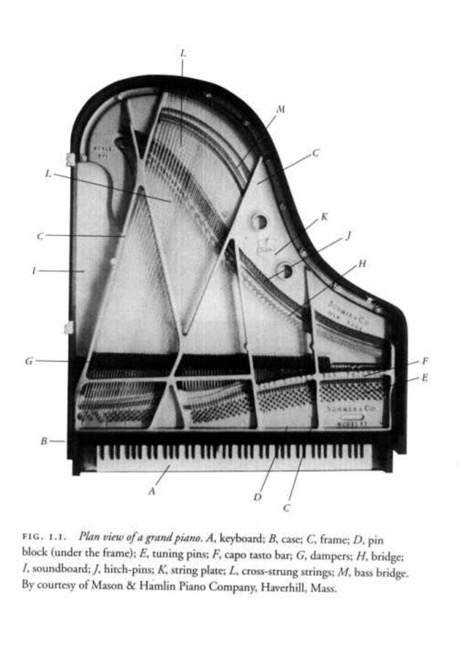
Image from Good, Edwin. Giraffes, Black Dragons, and Other Pianos.
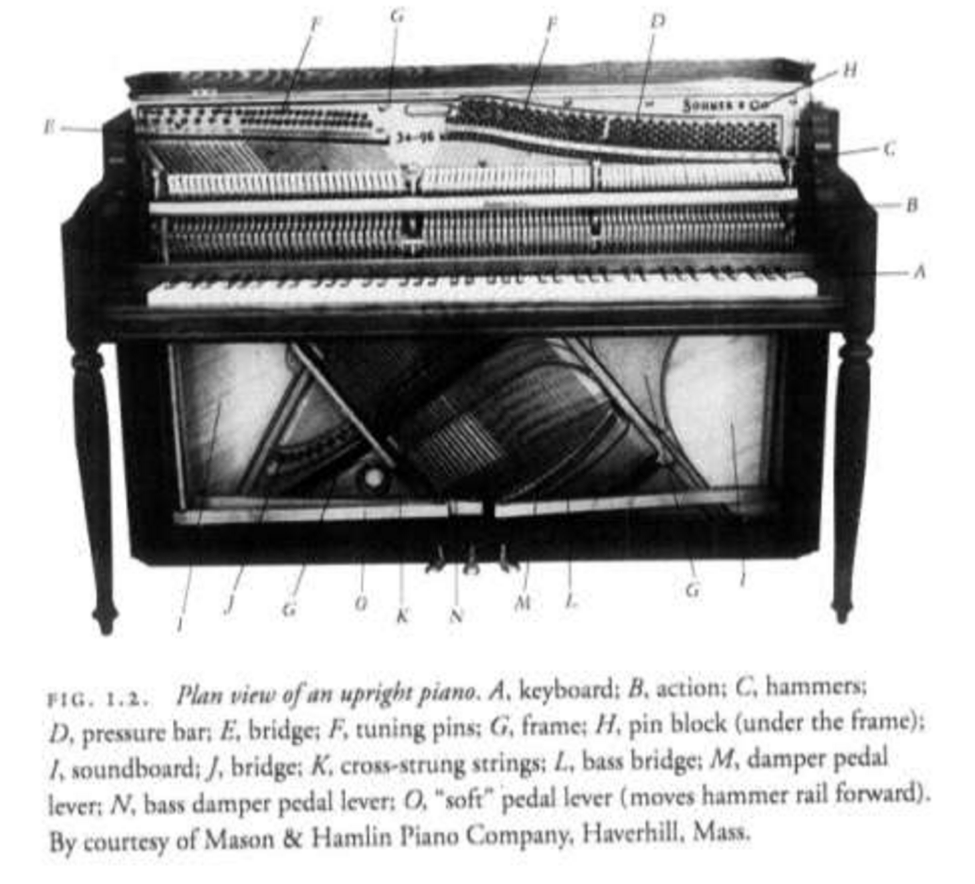 Image from Good, Edwin. Giraffes, Black Dragons, and Other Pianos.
Image from Good, Edwin. Giraffes, Black Dragons, and Other Pianos.
References:
- Dolge, Alfred. Pianos And Their Makers. London: Forgotten Books, 2015. Print.
- Good, Edwin. Giraffes, Black Dragons, and Other Pianos. Stanford: Board of Trustees of Leland Stanford Junior University, 2001. Print.
- http://pianonet.com/all-about-pianos/history-of-the-piano/
- All print images from Dolge, Alfred. Pianos And Their Makers. London: Forgotten Books, 2015. Print.
- All image reference under each image.
